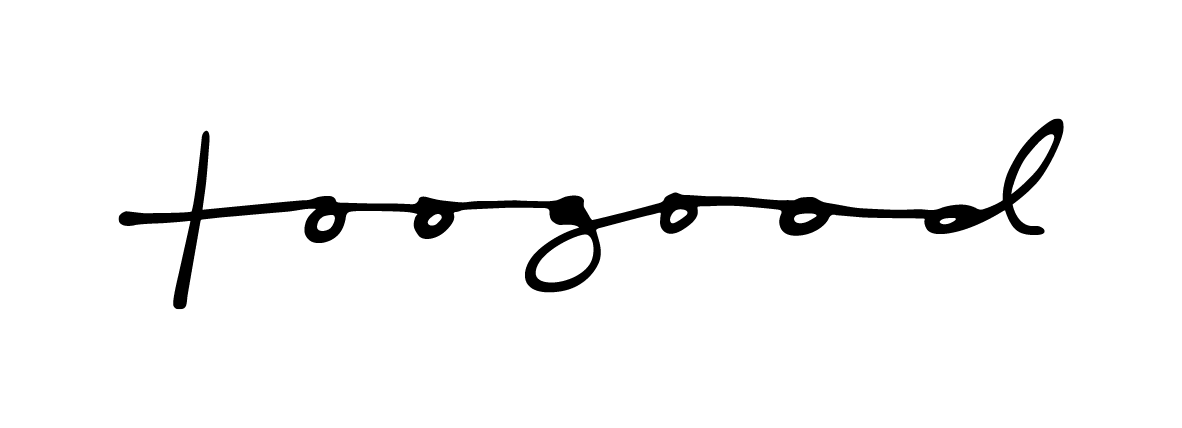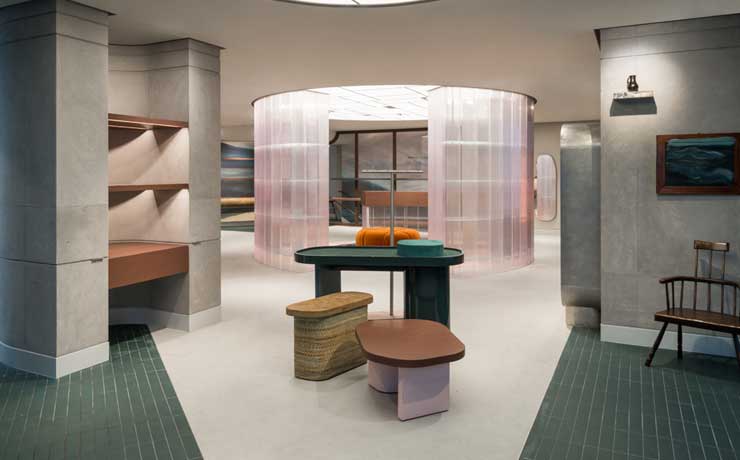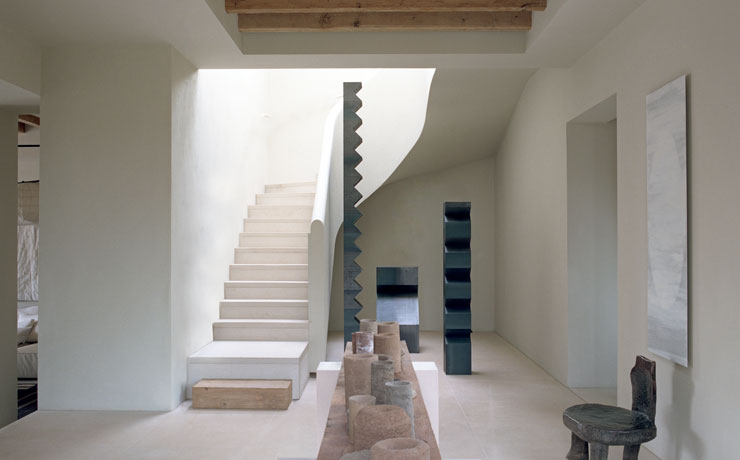バーバラ・ヘプワース『スモール・フォーム』(11月)
フェイ・トゥーグッド、ローリー・ポリ・チェア
フェイ・トゥーグッド、メイフェア・アパートメント |パトリック・ヘロン、グリーン・オン・ブラックス、 1956年
ピーター・ラニヨン、ゴドレヴィ、1954 |フェイ トゥーグッド、スペード チェア、ブロンズ、虹色の緑青
TOOGOOD、2021年春夏 |ポール・ナッシュ、 THE SHORE 、1923年
ヘンリー・ムーア、ポイント付き楕円形のマケット|フェイ・トゥーグッド、アセンブリ6: アンラーニング、フリードマン・ベンダ、ニューヨーク、2020年9月10日~10月17日
サザビーズ
2020年11月
文:フランシス・クリスティ、サザビーズのシニアディレクター
写真: フィリップ・シンデン、トビアス・ハーヴェイ、サザビーズ
彫刻家の目:フェイ・トゥーグッドが語るバーバラ・ヘップワースとイギリスの風景
フェイ・トゥーグッドは、彫刻、家具、ファッションの分野で活躍する現代イギリス人アーティストで、その作品はロンドンのフィリップス・ド・ピューリ美術館やヴィクトリア&アルバート博物館、ミラノのトリエンナーレ、ソウルのDミュージアムなどで展示されています。サザビーズのスコットランド美術と近代・戦後イギリス美術のオークションに先立ち、シニアディレクターのフランシス・クリスティがトゥーグッドの最近のプロジェクトについて、また近代イギリス人アーティストやイギリス自体がトゥーグッドにどのようなインスピレーションを与えてきたかについて語りました。
フランシス・クリスティー:あなたの最新のファッション コレクションは、1923 年のポール・ナッシュの画期的な絵画「The Shore」にインスピレーションを得ています。近代イギリス美術をどのように発見し、いつから影響を受けたのですか。
フェイ・トゥーグッド: 幼いころから私は芸術にとても熱中していました。私の成長にとても重要な役割を果たしてくれた祖母のような存在がいました。祖母はケンブリッジ大学で教育を受けており、膨大な数の美術書の蔵書を持っていました。祖母は私が7歳くらいのころ、とても幼いころからその本を私に見せてくれました。
FC: その年齢で特に印象に残ったアーティストはいましたか?
FT: 8歳のとき、セント・アイヴスのバーバラ・ヘップワース・スタジオに行きました。今でもはっきり覚えています。彼女が巨大な岩を削っている写真を見て、私もそうしたい、彼女のようになりたい!と思いました。彼女の作品に対する幼い頃の強い反応でした。その後、ブリストルで美術と美術史を学び、イギリス近代主義の時代に夢中になりました。それ以来、それは私の人生の大きな部分を占め、私たちはコーンウォールで多くの時間を過ごしています。夫もその時代に夢中で、彼の父親はヘップワースとニコルソンの両方を知っていて、彼らの作品をいくつか集めていたので、それは本当に素晴らしい形で私の人生の一部になっています。
FC: コーンウォールについて言及されていますが、そこには家族のつながりがあるのですか?
FT: 私たち家族にとって、ここは大きな魅力です。私たちは何年もの間、この海岸沿いの地域、光、風景に引き寄せられてきました。ここはとても原始的な場所で、私は確かにこの風景の中に一体感を感じています。
FC: まさにヘップワースとニコルソンのようですね!あなたが説明したのと同じように、コーンウォールは彼らにインスピレーションを与え、彼らは第二次世界大戦の初めにそこに移住しました。あなたも、同じような光と風景があなたの作品に影響を与えていると思いますか?
FT: まったくその通りです。私の作品に明確なテーマがないか探ろうとすると、たいていは風景、彫刻の幾何学や形状、そして素材に行き着きます。また、この 3 つは、モダニズム時代のイギリスの作品に多く見られるものです。彼らもまた、形状や幾何学、素材へのこだわり、そして自然の風景から得た色彩に関心を持っていました。コーンウォールで活動するアーティストについて言えば、パトリック・ヘロンの色彩は素晴らしいです。私は彼の色彩をベースにしたインテリアを全部手がけました。パトリック・ヘロンのコレクションを所有している人のためにメイフェアで私がデザインしたインテリアがあったのですが、どの部屋もヘロンにインスピレーションを受けていて、とても美しかったです。
FC: あなたのプロジェクトはすべて芸術作品から始まるのですか?
FT: 多くの場合、モダニズム時代の素材や芸術作品から始めます。確かにヘップワースの作品を見ると、曲線や女性的なフォルム、そして同時にボリュームと空虚さ、貴重さと生々しさといった点で、私にとって幾何学的要素がとてもしっくりきます。私は彼女が石膏で作った作品も、より細かい石を使った作品も本当に好きです。貴重さと生々しさ、男性的なものと女性的なものといったコントラストにとても惹かれます。
FC: ヘップワースの彫刻の曲線についておっしゃっていましたが、あなたの有名な椅子「Roly Poly」は、私たちが出品している小さなアラバスター彫刻と確かに類似点があります。この椅子を制作しているときに、ヘップワースを念頭に置いていましたか?
FT: セールで彫刻を見たとき、わあ、これはローリー・ポリだ!と思いました。私は長女を出産した直後にこのコレクションを制作しましたが、特にあの椅子、あの形は多くの影響を受けています。人々はそれをさまざまなものと見なします。ポップで1960年代風、アールデコ風、アフリカ風、原始的など。そこには多くの参照があり、確かにヘップワースや彼女の作品の原始的な参照への敬意があります。
FC: ヘップワースも1934年に三つ子を出産しています。彼女と同じように、あなたは3人の子供との家庭生活と、コレクションやデザインの制作をどのように両立させているのですか。
FT: 若い女の子として、バーバラ・ヘップワースのような人に早くからインスピレーションを受けるというのは、とても興味深いことです。私が見た写真の中に彼女の力強さと決意を感じたことを覚えており、それは間違いなく私の中にもあると思います。否定的な意味でも肯定的な意味でも、執拗という言葉が私を最もよく表していると思います。私は複数のことを同時にこなす能力があり、常に自分なりの方法で、自分の言葉で前進していると感じる必要があります。
私はデザインを学んだわけではなく、美術と美術史を学んだだけですが、それでもデザインの仕事をしています。デザインを学ばなかったおかげで、ルールを持たずにすみました。デザイナーの多くは、1920 年以前、あるいは 1910 年以前の本を開くことを恐れていると思います。しかし、美術史と美術を学んだことで、過去に戻ってもまったく問題ないと感じるようになり、それが私の仕事に確実に影響を与えています。ルールなしで働き、仕事を通じて学ぶことで、私のキャリアは基本的に試行錯誤と実験の連続でした。
FC: 美術史と美術を学んでから、どのようにしてデザインに転向したのですか?
FT: 私はブリストル大学を卒業し、インテリア エディターとして 8 年間、ワールド オブ インテリア誌で勤務しました。スウェーデンの宮殿からマリの泥造りの小屋まで、美術、骨董品、インテリアに接する機会は多々ありましたが、これは美術史を学んだことで得た最高の教育でした。しかし、8 年経つと、どうしても 3 次元で作業したいという気持ちが強くなり、物や空間を作り、その空間の中に物を作りたいという強い願望が湧いてきました。最初はインテリア デザインから始まり、次にインテリアの中に物を作りたいという願望が生まれ、最近では衣服に至っています。オメガ ワークショップやブルームズベリー グループと同じカテゴリに入れるまで、これらすべての分野の相互関係を理解していない人が多いのです。素材感や形状感覚を衣服や着こなしに適用すると、私にとってはすべて同じもの、同じ言語の一部になります。それは視覚表現の別の形にすぎません。一枚の布で、人が自分自身について感じる気持ちを完全に変えることができるのです。私の姉は素晴らしいパターンカッターなので、彫刻と服作りのつながりは非常に密接だと感じています。
FC:あなたの2021年春夏ファッションコレクションは、1923年にポール・ナッシュが描いたディムチャーチの有名な絵画「The Shore」にインスピレーションを得ていますが、このコレクションはどのようにして生まれたのですか?あなたはずっとこの絵が好きだったのですか?
FT: ずっと好きで、本の中でそのイメージを再発見しました。私は昔から本を集めるのに夢中で、定期的に読み返しています。その絵を再び見つけてすっかり魅了され、それがコレクション全体の原点となりました。
FC: 現代のイギリス人アーティストのどんなところに惹かれるのですか?
FT: 彼らとは非常に直感的で本能的なつながりを感じます。彼らが使う色、形、形状、素材が私にはしっくりきます。彼ら全員が私の一部、大家族の一部のように感じます。初期のアメリカ美術やイタリア美術を深く尊敬していますが、同じようには私の一部だとは感じません。また、モダニズムの時代とも本当につながりを感じます。その時代に生きていたなら、間違いなくすべてのアーティストと友達になりたかったでしょう。彼らは私と同じような人たちのように思えます!ヘップワースやニコルソンのようなアーティストにはイギリスらしさもあります。私の作品はイギリス的だと表現する人がたくさんいますが、それを正確に表現するのは非常に難しいのですが、ユーモアのセンスと独特の色彩感覚や物質感の組み合わせだと考えることが多いです。
FC: イギリスの風景にも同じようなつながりを感じますか?
FT: はい、まったくその通りです。私がよく聞かれる質問の 1 つは、私にインスピレーションを与えるものは何ですか、ということですが、それは間違いなく風景です。コンセプトやストーリー、新しいデザインを考え出す必要がある場合、インスピレーションを得るために世界中を旅する必要はありません。ただ何もないところに外に出れば、それが浮かんでくるのです。幼い頃から風景とのつながりを感じており、風景は私にとって非常に重要な部分です。私たちは最近ロンドンから引っ越しましたが、風景を再発見するのは楽しいです。子供の頃はとても田舎暮らしだったので、田舎の風景とのつながりを再発見したことで、私の創造性が再び高まりました。
FC: 絵画、彫刻、風景の要素など、インスピレーションの源を見つけたら、それをどのような方向に持っていくかをどのように決めますか? さまざまなコレクションに一定のリズムがあるのですか?
FT: ファッションの面で私が気に入っていることの 1 つは、かなり構造化されていることです。年に 2 つのコレクションを作成することが求められており、独自の方式があるため、そのリズムが好きです。しかし、家具のデザインはより個人的な作業であり、クリエイティブなプロセスはまったく異なる方法で盛衰します。今年はニューヨークでマケットをベースにしたソロ コレクションを発表しましたが、それ以前の 3 年間はショーを行っていませんでした。それは、私の人生で何が起こっているか、何にインスピレーションを受けているか、何に関係しているか、何とつながっているかによって大きく異なります。
ニューヨークで発表したコレクションは、ヘンリー・ムーアに深く影響を受けたと思います。私は小さな立体模型を作り始め、針金、紙、セロテープ、マスキングテープ、ボール紙、古いキャンバスの切れ端など、スタジオにあるものを使って、1年かけて400体ほどの模型を作りました。とにかく必死になって新しい形、新しい作業方法を見つけようとしたのです。それから模型を絞り込み、私が何らかの形でつながりを感じられるものが20体ほどになりました。それらを中心にコレクションを作るにあたって、私はそれらをあまり発展させないこと、制作の最後まで模型の素朴さを保つことにかなりこだわりました。最終的に出来上がったのは、針金のように見えますが鉄細工でできており、椅子の背もたれにボール紙のように見えるものが折り込まれていますが、実際にはボール紙のように見えるようにブロンズ塗装されています。この一連の作品は、模型と、その最初の創作の瞬間の美しさに敬意を表しています。彫刻家のヘンリー・ムーアとバーバラ・ヘップワースが、素材に忠実であるというこの考えに心を奪われていたことは、確かに私にはわかります。私はデザインの仕事をしているのですが、テーブル、椅子、スクリーン、そして作品に機能感がありますが、私たちはその素朴さと創造性の感覚を保つために一生懸命努力してきました。
FC: 機能について言えば、あなたはあらゆる次元において、どのように物や仕事と向き合って生きていますか?
FT: 私のワードローブは私たちの服でいっぱいなので、その部分は満足しています。ここ数年は家が見つかるのを待っていたので、すべてを収納してかなりミニマルな暮らしをしてきましたが、今は家を買ったばかりなので、この1年でアーカイブからすべての服を集めて、それらとともに暮らし始めるつもりです。とても楽しみです。何も持たずに暮らすのはかなり解放感がありますが、私は物が好きで、それらとのつながりを感じるのが好きな人間です。
記事全文は、 こちらから現地でご覧ください。


